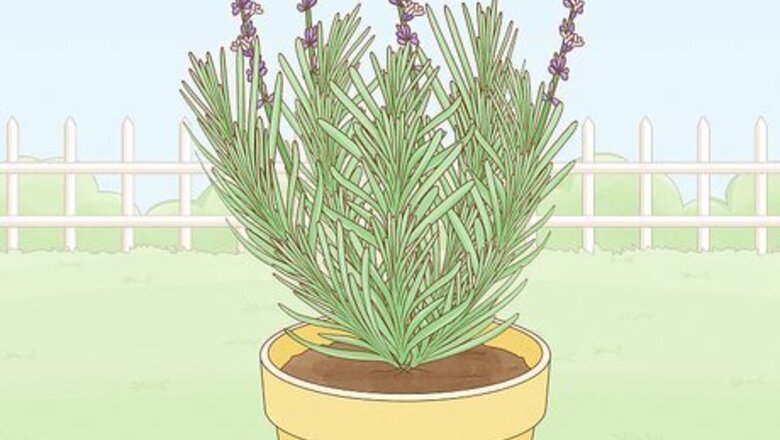
views
Cutting the Flowers
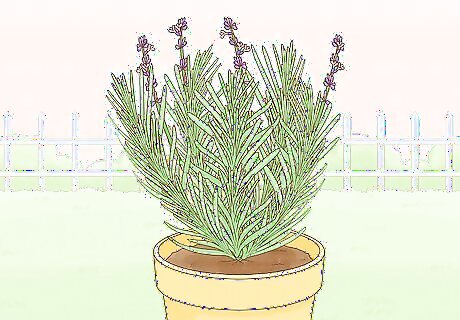
Wait until 40% to 50% of the plant has flowered buds. Usually, this is in early to mid-spring. You might be able to tell that the lavender is ready by looking for tons of bees as they fly around to pollinate each plant. If you cut lavender in the spring, the plant may have time to produce more flowers for a second harvest. Try to harvest the lavender when the flower buds are swollen and the flowers are just beginning to open, but haven't fully opened yet.
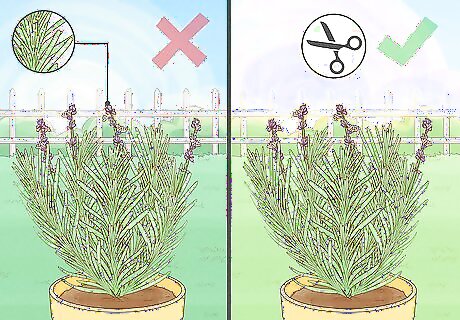
Harvest the lavender in the morning when the dew has evaporated. The best time of day to harvest lavender is in the early morning. This will give you the highest concentration of oils inside the plant so your lavender harvest smells or tastes great. If you wait for the later part of the day, the sun may evaporate some of the oils inside the plant. They’ll still smell good, but they won’t be as potent as they were earlier in the day.
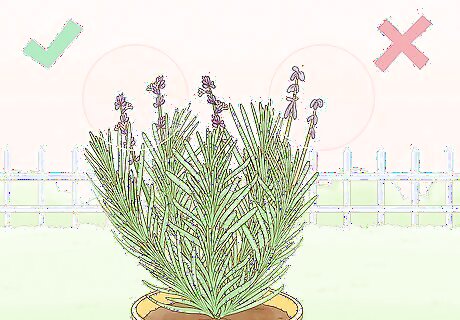
Choose flowers that look colorful and fresh. As you look through your lavender plants, try to pick out the flowers that look the freshest with the fullest color. You can pass over any flowers that look small or droopy, as they probably won’t smell or taste as good. Think about picking out lavender like you’d pick out fresh fruit—if it doesn’t look colorful and ripe, don’t pick it.
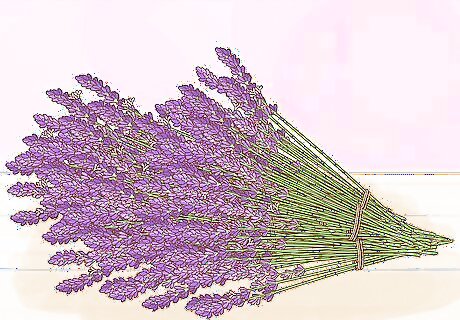
Gather 50 to 100 lavender stalks into a bunch. Use your hands to gather enough stalks to comfortably fit in your fist, or around 50 to 100 stalks. The stalks are quite hardy, so you can gather from all parts of the bush without worrying about tearing it apart. The bundle that fits inside your hand is called a “bunch.” A first-year lavender bush will typically produce only enough flowers to form 1 or 2 bunches, but older plants can give you up to 10 bunches.
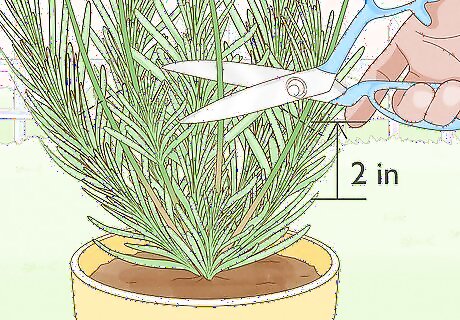
Cut the lavender 2 in (5.1 cm) above the woody growth. If you examine the lavender bush, you'll see it's rooted to the ground with tough, woody growth. Above this is the “new growth,” which looks green and flimsy. Use your pruning shears to cut at least 2 inches (5.1 cm) above the woody part of the stalk to give the plant enough to work with for a new bloom. The best cutting tool for lavender is called a harvesting knife. It's curved like a scythe and has a serrated edge. If you don't have one on hand, a hand pruner will also work just fine. If you're using a harvesting knife, hook it around the bunched lavender and pull the knife toward you, cutting off the lavender stalks. If you want to keep your lavender flowers in a bundle, tie a rubber band around them before you cut them off. It's best to harvest the entire stem, rather than trying to cut away just the flower. That way, you aren't left with a bunch of sticks all around your plant.
Drying and Storing Lavender
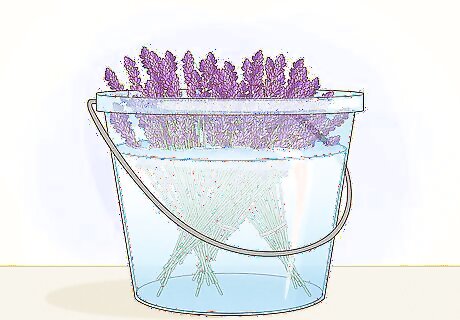
Place your bundles in water until you’re ready to use them. If you’re keeping your lavender fresh, you can fill up a vase with water, then put your bundle in it. This isn’t a long-term solution, but it can keep your lavender fresh for a few days until you’re ready to use it. If you’re going to display lavender, this is a great way to store it until you’re ready to put it into a bouquet.

Rinse the lavender to remove pests. Run your lavender flowers and stalks under cool water, then submerge them in water to remove any dirt or pests. Lay them out on a paper towel and pat them dry to clean them off. Rinsing your lavender is super important if you’re going to eat it. If you’re using it for decorative purposes or you’re drying it out, you don’t need to worry about it as much.
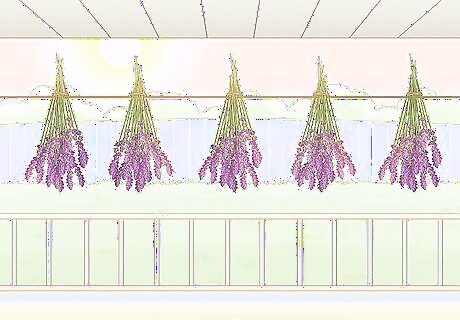
Dry the lavender in bunches or on screens. You can use a food dehydrator, hang it upside down to dry in a cool, dark spot in your home, or dry it outside on metal screens in the sun. If you do sun-dry it, it may lighten the flowers just a bit as they dry out. If you opt to hang your lavender to dry, use twine or twist ties to gather the stalks in bunches and hang the bunches upside down off of hooks or nails. Retie the stocks as necessary to keep them together, since they will shrink while drying. Drying your lavender indoors can take a few weeks, while drying them in the sun only takes a few days.
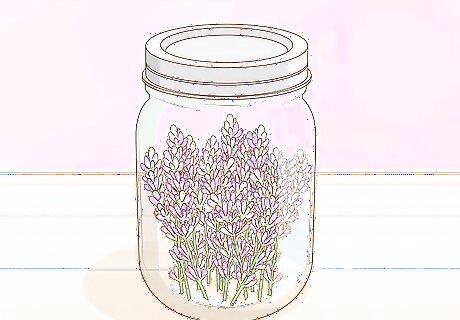
Seal the dried lavender in an airtight container. You can use a plastic bag, a glass jar, or a plastic container with a lid to keep your lavender fresh. Seal it up tight so that air can’t get into it before you put it away. Make sure that your lavender is really dry before you put it away! Storing wet lavender can cause mold to develop, which will ruin the scent of your lavender. Dried lavender usually keeps its scent for about 1 season.
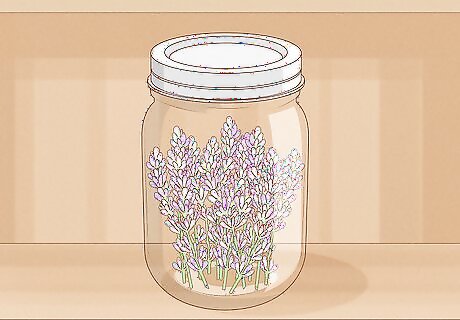
Store your dried lavender in a cool, dark place. Storing the lavender away from sun and heat will help it last as long as possible, and it will preserve the natural flavor and scent of the flowers as well. You can store your lavender in your kitchen pantry, a cabinet, or the basement (as long as it doesn’t get below freezing). Dried lavender can last for months. The main thing you have to worry about after it’s dried is the petals falling off of the stalk—since they’re so small, it can be hard to sweep them up again.
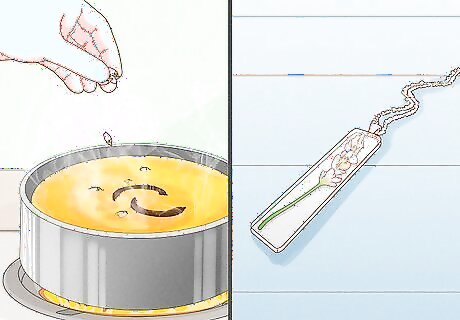
Use the lavender in cooking and crafts. Now it's time to put the lavender to use! You can place the dried stems in vases to decorate your home, use the flowers to make sachets, or make delicious confections with your harvest. Lavender smells and tastes great, so you have a range of options when it comes to using your flowers. Be careful when cooking with lavender. Too much in your food can taste a bit like perfume, so go slowly at first! Dried lavender looks beautiful when arranged with neutral-colored flowers, like white lilies or daisies.













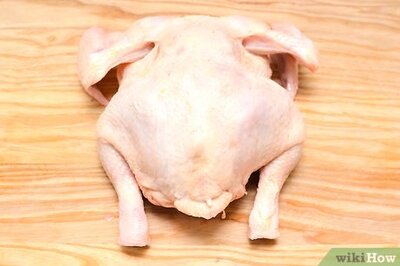




Comments
0 comment